5 Helpful Tips for Disabled Shooters
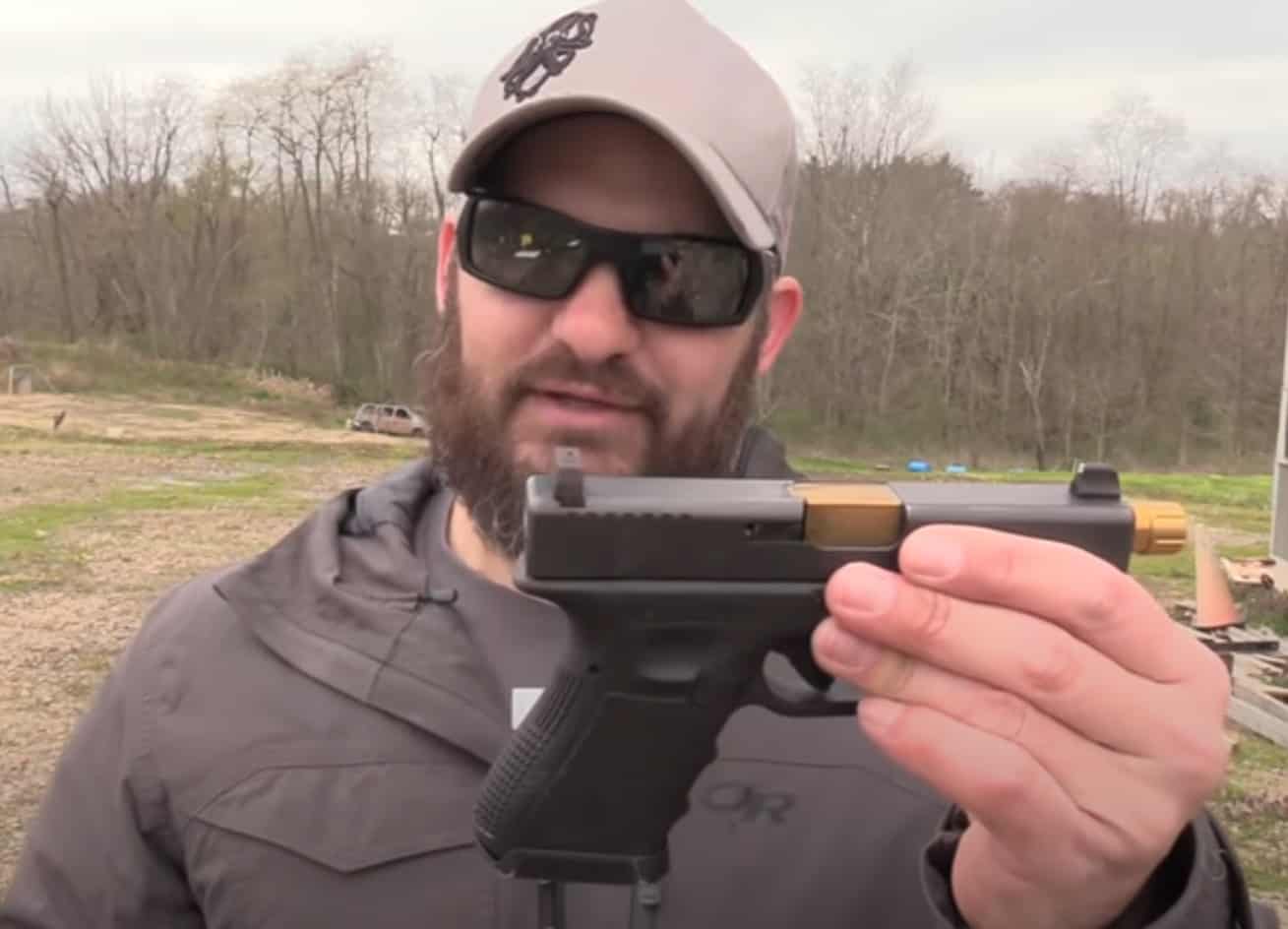
People with disabilities are still capable of shooting a gun, contrary to popular belief. I’ve met many talented shooters with disabilities.
Many people in wheelchairs shoot firearms. There should be no problem accommodating you at your local range.
Enjoy the relaxed atmosphere and have fun during this time. Take advantage of this opportunity to test out different handgun designs.
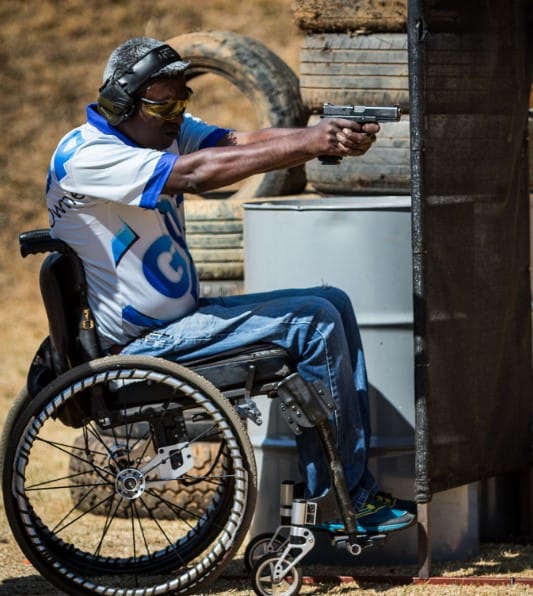
In addition to standard rounds, you can also explore higher-powered rounds. During this time, you can also practice shooting scenarios using steel silhouettes or paper targets.
Find a range that will accommodate disabled shooters and ask if their range officers or instructors have experience working with disabled shooters, as this is a great way to make the most of your range time.
Having said that, here are a few more tips to help disabled shooters and individuals with disabilities. As a result, nearly anyone can use firearms at the range or in self-defense, regardless of physical ability.
1. Choosing The Right Handgun
Self-defense guns are best if they can be handled with confidence, and the best gun for you depends on what you need.
It is vital to choose a gun that you feel confident in handling. For people with disabilities who want to defend themselves, .22LR revolvers can often be the right firearm.
Generally, the type of gun you can safely handle depends on:
- Caliber of the bullet.
- Whether it is a revolver or pistol.
- Your physical ability.
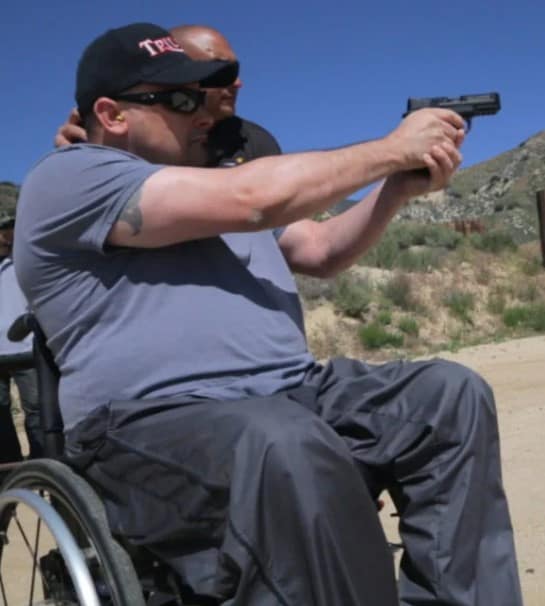
For example, you may have difficulty controlling yourself because of a loss of arm strength or muscle strength. This situation may mean you must use a revolver that fires .22 LR ammo or .22 Magnum ammo.
The .22 caliber revolver is your best bet because of its low recoil. A revolver usually has less recoil and is easier to handle.
When the gun is pulled from its holster, and the trigger is pulled, only a few steps are required. Cleaning and maintaining them is also easier than most semi-automatics.
2. Make The Gun Easier To Load
Let’s face it; facts are facts. It is not the aim of target shooting to spend time loading magazines but to shoot down range and destroy targets. Hence, I suggest dropping the macho exterior for a speed magazine loader.
A speed loader is worth the investment for arthritic hands or people with hand weakness resulting from other illnesses or injuries. Speed magazine loaders are included with some semiautos, such as Beretta and Heckler & Koch.
You can find universal ones at your local sporting goods stores or online, such as Butlers Creek and MagLula if your pistol of choice does not come with one.
The night before, load your magazines so that you make the most of your range time. For this purpose, you’ll have to get yourself additional magazines for your pistols.
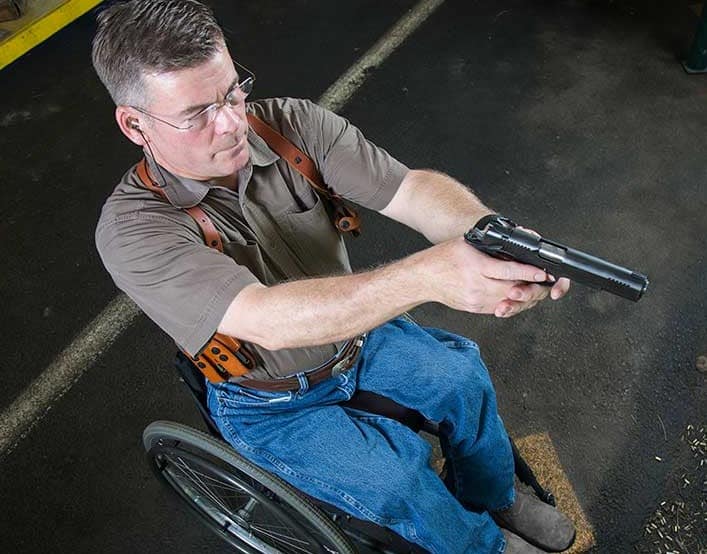
3. Choose The Right Holster
Accessing a gun from behind can be very challenging if you are in a wheelchair or rely on another form of mobility aid.
It can also be difficult to remove a firearm from a holster located on the side of a wheelchair or by using other parts of a walking aid. When it comes to concealed carry, there are two types of holsters that you should use:
Shoulder Holsters
These holsters are perfect for people in wheelchairs who have to pull the trigger while seated. It is a good idea to practice drawing the gun from a new holster a bit to ensure you do it correctly.
Fanny Pack Holsters
These holsters are similar to regular fanny packs. In the event that you fall, or your walking aid gets separated from you, you can use a fanny pack.
Wherever you go, you’ll still have your fanny pack on. The gun can be drawn so long as you have access to the pack and can open it. You can also take a first aid kit with you, along with medication, sundries, or everything else you may need.
Whatever type of holster you choose, drawing is very important. It is a good idea to make sure the gun is unloaded and in a safe place.
Practice also while you are moving, in addition to every position you might end up in. There are a lot of people who don’t realize the value of these drills, but they can save lives.
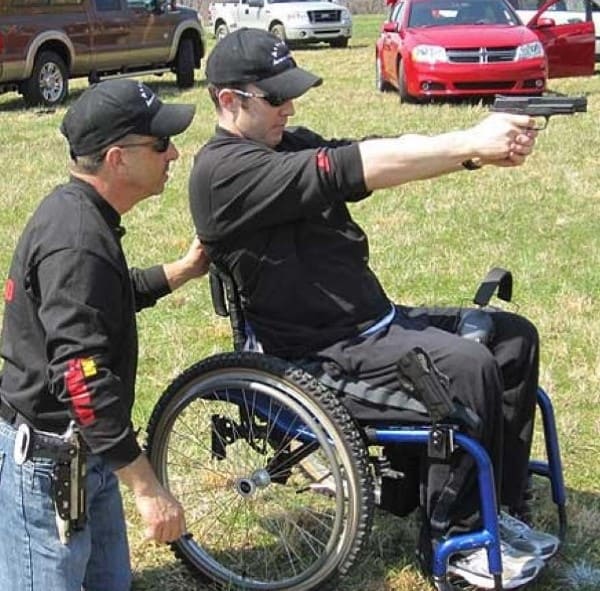
4. Rack it
The task of racking or changing a semi-automatic pistol can be challenging even for the tallest and strongest shooters.
A small family-owned business from Western North Carolina has developed a Glock and Springfield Armory gun owner’s product. It’s great to hear about TGR Enterprises, Inc.
Specifically, it is the Brass Stacker Slide Pull; this product was designed to help those who struggle with gripping slide serrations. From the elderly to those with arthritis to those with petite frames, men and women are also included in those with injuries and disabilities.
In order to use the Slide Pull, the shooter simply inserts a finger into the large circular attachment and pulls straight back. The Slide Pull attaches to the serrations on a pistol’s slide.
5. Shooting With Impairments
Shooting well is possible even if your hands, arms, or shoulders are impaired. With these tips and accessories, even those with the most severe disabilities can have an easier time with firearms, whether it is at the range or in self-defense.
Investing in a speed loader is a good idea for every shooter, according to my experience. The pistol slide is fitted with serrations that allow this accessory to attach. You can use your finger to operate the slide by putting it into the circular hole and pulling straight back.
If you decide to use aftermarket sights, you may save time and make your life more convenient, even though you can use the sights on your firearm.
Night sights are especially recommended for defensive handguns, but especially for those who may have difficulty aiming due to impaired motor control or poor eyesight.
It is extremely difficult for shooters who do not have strong fingers to use most firearms, and it was once considered an absolute disability. It has become easier to overcome this issue thanks to a variety of useful accessories.
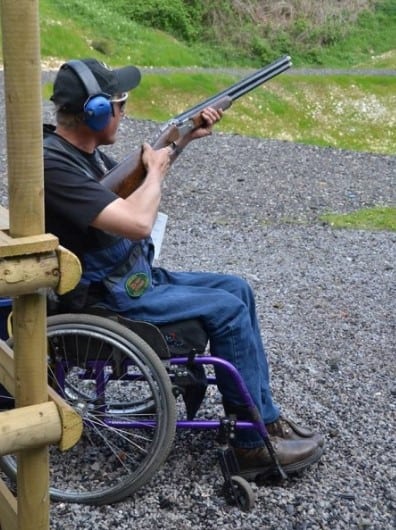
Final Words
Feel free to leave a comment below if you have a disability and are able to shoot, and I will do my best to help.
If you have any other ideas to resolve any of these problems, I’d appreciate hearing about them, as they may be useful to someone else if mine fails. And these are the top five helpful tips for disabled shooters.
